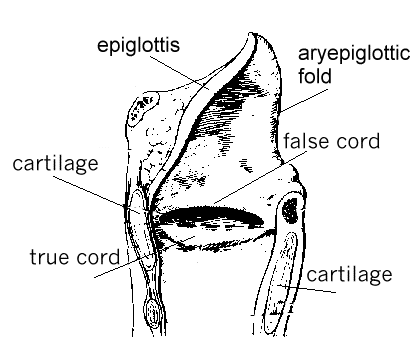| Supraglottic Larynx (see
pic) The lymphatic drainage is
separated into two components, a superficial mucosal component that
drains into a deep system of collecting ducts. The deep system unites
with the lymphatic drainage of the inferior pharynx The draining vessels
of the unified deep system exit the larynx through the natural defect in
the thyrohyoid membrane that permits passage of the superior laryngeal
neurovascular bundle. At this point, one component of the lymphatic
drainage extends superiorly and terminates in the ipsilateral Level II
nodes while a second component extends lateral and drains into nodes
located at the junction of Levels II and III. There is occasionally a
third component that drains into the nodes located in Level III nodes
Tumors involving the supraglottic larynx are at risk for crossed
lymphatic drainage. However, the drainage mechanism is unclear. There
appears to be cross-drainage of the superficial mucosal lymphatics,
however, no consistent direct cross-drainage of the deep collecting duct
has been described. B & C. Schematic illustrations demonstrate the
ipsilateral (B) and contralateral (C) nodal groups most likely at risk
for developing nodal metastases from a lateralized supraglottic
carcinoma. On the ipsilateral side, Groups II and III are at greatest
risk for developing nodal metastases. The group at highest risk for
metastases on the contralateral side is Group II. (see pic
B and
C) |
